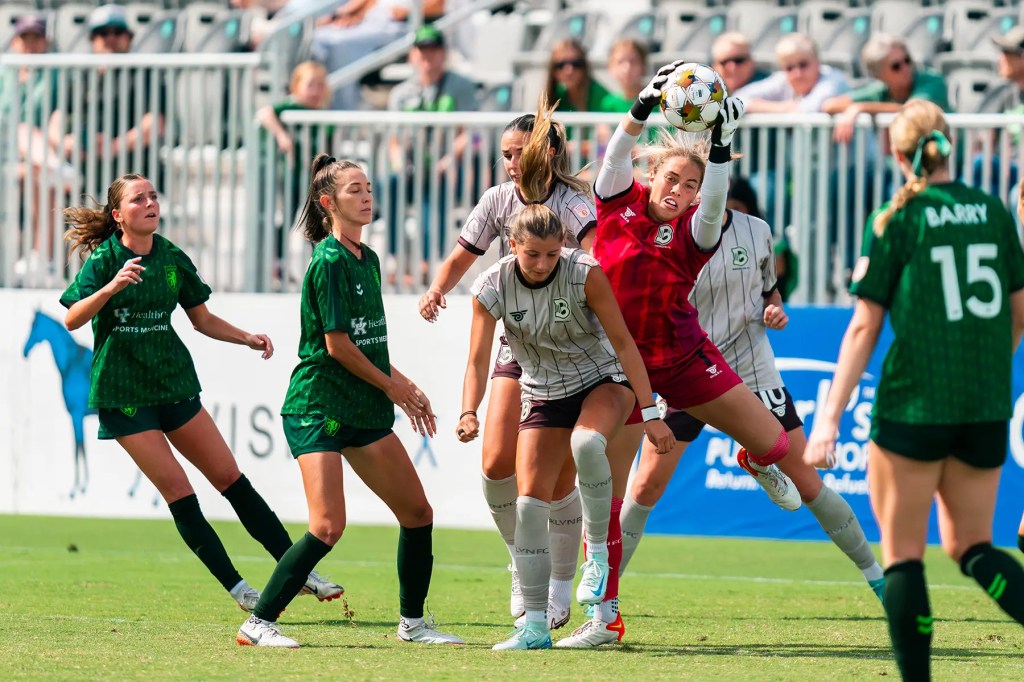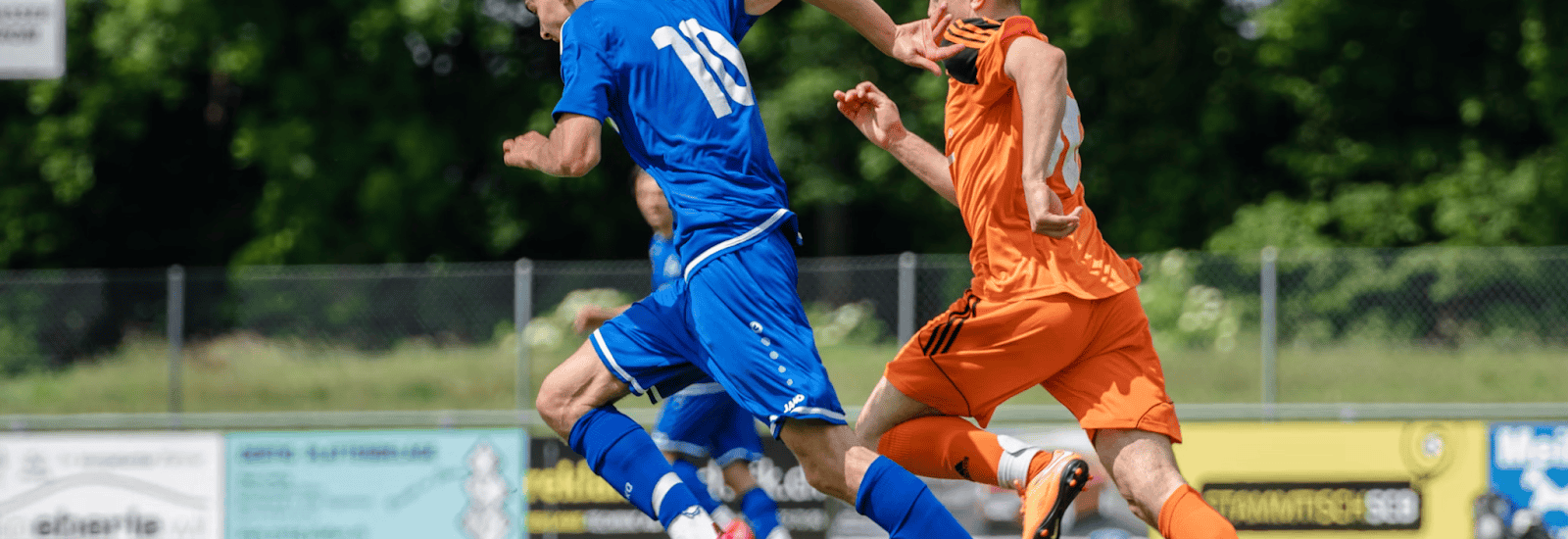Soccer may be the world’s game, but in the U.S. the pathway from youth fields to professional stadiums looks different than anywhere else. Instead of promotion and relegation determining who rises and falls, American soccer is built on a pyramid of youth leagues, amateur clubs and professional tiers that all work together to grow the sport. For fans, understanding this structure makes it easier to see how local teams like Brooklyn FC fit into the bigger picture and why every level matters in building the future of soccer.
Professional Soccer Leagues
At the top of the U.S. soccer pyramid are the professional leagues, which provide the highest level of competition and visibility for players and fans. Unlike in other countries where promotion and relegation connect the tiers, U.S. leagues are separate but complementary, with each tier serving a distinct role in the development of the sport.
Tier 1: Major League Soccer (MLS)
MLS is the premier men’s league in the United States and Canada, founded in 1996 following the 1994 FIFA World Cup. It features well-known clubs like LAFC, Atlanta United and the New York Red Bulls.
Built on a franchise model, MLS continues to expand into new markets, with teams added through bidding and investment rather than earning promotion. The league is also known for its Designated Player rule, which allows clubs to sign international stars, and for participating in international competitions like the CONCACAF Champions Cup.
Tier 2: USL Championship
The USL Championship sits just below MLS and is recognized as a strong second division. With clubs spread across the country, it has grown into one of the most competitive leagues outside MLS. The USL emphasizes community-driven soccer, often with teams that reflect local identity and pride. Matches in the USL Championship are fast-paced, and the league has developed a reputation for producing talent that eventually moves into MLS or international play.
Tier 3: MLS NEXT Pro, USL League One, and NISA
At the third tier, multiple leagues provide platforms for growth and development:
- MLS NEXT Pro was launched in 2022 as a developmental league directly tied to MLS academies and reserve teams. Its main focus is bridging the gap between youth academies and first-team rosters.
- USL League One offers a professional environment in smaller markets, helping bring high-level soccer to cities without MLS or USL Championship clubs.
- NISA (National Independent Soccer Association) provides an alternative third-division pathway, promoting an open system that gives clubs more independence and flexibility.
Together, these leagues form the backbone of professional soccer in the U.S., with each tier contributing to the game’s growth while offering distinct experiences for fans and players alike.
Amateur and Semi-Professional Soccer Leagues
Below the professional divisions, a wide network of amateur and semi-professional leagues supports player development and community engagement. These leagues give college athletes, local clubs and ambitious players a chance to compete at a high level while staying connected to their communities.
National Leagues
- USL League Two: Often described as a “pre-professional” league, USL League Two provides a competitive summer season primarily for college players. Many MLS and USL professionals gained valuable experience here before signing their first contracts.
- NPSL (National Premier Soccer League): Recognized for its grassroots, community-driven clubs, the NPSL provides an additional platform for college athletes and post-college players. Teams often represent passionate local fan bases.
- NISA Nation: Affiliated with the professional NISA league, NISA Nation is an amateur competition designed to provide a pathway for independent clubs that aspire to climb higher.
- UPSL (United Premier Soccer League): One of the fastest-growing leagues in the country, the UPSL is built on accessibility and scale, with hundreds of teams spread across regional divisions. It’s open to all and provides an important entry point for clubs nationwide.
Regional and Local Leagues
Alongside national competitions, regional and state leagues organized by the U.S. Adult Soccer Association (USASA) allow countless players to stay involved in the game. From highly competitive amateur clubs to recreational teams, these leagues give soccer a truly local flavor while connecting back to the larger U.S. structure.
Grassroots and Local Soccer
Not all soccer happens under a formal league banner. Community clubs, recreational leagues and pickup games are where the sport remains most accessible. Grassroots soccer is where love for the game begins and where lifelong fans and players are made.
Youth Soccer
The foundation of the entire pyramid is youth soccer. Organizations like U.S. Youth Soccer, Elite Clubs National League (ECNL), and MLS NEXT offer structured environments for player development, while school teams and community programs ensure the game is open to everyone. Youth soccer is where future stars first touch the ball, and where everyday players learn the values of teamwork, discipline, and fun.
Together, these levels ensure that soccer in the U.S. is more than just professional teams at the top, creating a connected ecosystem where players of all ages and skill levels have a place to play.
What Makes the U.S. System Unique
While the U.S. soccer pyramid shares similarities with global structures, there are key differences that set it apart.
1. No Promotion and Relegation
In most countries, clubs can move up or down divisions based on performance. In the U.S., leagues are franchise-based, meaning teams buy into a league rather than earn a spot through competition. This system prioritizes financial stability and controlled growth but limits the fluidity seen abroad.
2. Franchise and Expansion Model
Leagues like MLS and the USL expand by awarding franchises to new cities and ownership groups. Expansion fees fund league growth, and new clubs are carefully placed in markets with the potential to support them. This model has helped soccer spread into areas across the U.S. but differs from the organic rise of clubs overseas.
3. College Soccer as a Pathway
Another uniquely American element is the role of college soccer. For decades, it has served as a key development path for professional players, something rarely seen in other countries where academy systems dominate. Though academies like MLS NEXT are growing in influence, college soccer still plays a major role in producing talent.
4. Growing Investment and Infrastructure
With more professional academies, state-of-the-art stadiums and youth development programs, the U.S. system is evolving quickly. The upcoming 2026 World Cup, hosted in part by the U.S., is expected to accelerate investment and spark further growth.
Where Brooklyn FC Fits In
Brooklyn FC is part of the growing professional women’s game in the United States, competing within the USL system. As Brooklyn’s first professional women’s soccer team, the club brings high-level competition to a community with deep sports culture and history. Positioned in the U.S. soccer pyramid as a pro pathway, Brooklyn FC gives local players a platform to showcase their talent while providing fans with a chance to support the sport at home in Coney Island.
Brooklyn FC is more than just a team on the field. It represents a vital link between grassroots soccer in New York and the larger professional landscape, offering fans a direct connection to the growth of women’s soccer nationwide.

The Fan Experience
One of the most exciting aspects of the U.S. soccer system is how fans can experience the game at every level. From cheering on neighborhood clubs to attending matches in professional stadiums, the pyramid offers endless ways to connect with the sport.
For Brooklyn fans, Maimonides Park becomes the centerpiece of that experience. With the boardwalk as a backdrop and the energy of Coney Island in the air, matchdays are as much about community as they are about competition. Whether you’re a lifelong soccer supporter or catching your first game, being part of the crowd brings the pyramid to life.
Even if you can’t make it to the stadium, you can still be part of the action. Brooklyn FC matches are streamed on Peacock and SportsNet New York (SNY), giving fans across the city and beyond a chance to follow the team.
Ready to experience the U.S. soccer pyramid up close? Catch a Brooklyn FC match live at Maimonides Park in Coney Island — or tune in on Peacock and SNY to support Brooklyn’s first professional women’s soccer team.
FAQs
1. How does the U.S. soccer system differ from other countries?
Unlike most countries, the U.S. does not use promotion and relegation. Instead, leagues are franchise-based, with expansion teams added as the sport grows.
2. What league does Brooklyn FC play in?
Brooklyn FC competes in the USL system, part of the broader professional soccer pyramid in the United States.
3. Where can I watch Brooklyn FC games?
You can watch Brooklyn FC at Maimonides Park in Coney Island or stream matches on Peacock and SportsNet New York (SNY).
4. Why is Brooklyn FC important for women’s soccer?
Brooklyn FC represents the continued growth of professional women’s soccer in the U.S., offering fans in New York a chance to support the game at a local, grassroots-connected level.
5. Where does college soccer fit into the pyramid?
College soccer doesn’t fall neatly into the U.S. soccer pyramid, but it plays an important role alongside it. For decades, the NCAA has been a major pathway for players turning professional, especially before the rise of MLS academies and USL development programs. While many top prospects now come through academies, college soccer remains a key stepping stone for athletes — particularly in the women’s game — and connects closely to leagues like USL League Two and the NWSL/USL system.




























































































































































































































































































